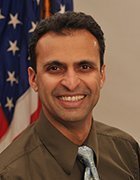HealthITBuzz
See the following -
Aligning with the Standards Development Community: The New Cycle for Standards Version Advancement Process
 As part of ONC’s ongoing charge to coordinate across federal and industry stakeholders, we determined it was necessary to adjust our Standards Version Advancement Process (SVAP) timeline. Although it may seem like this process has been around for a while, it’s still brand new and we’ve been looking at ways to optimize how the process aligns with other standards development work in the community. The changes we’ve made will help ensure timely publication of implementation specifications central to our cadence for new versions of USCDI.
As part of ONC’s ongoing charge to coordinate across federal and industry stakeholders, we determined it was necessary to adjust our Standards Version Advancement Process (SVAP) timeline. Although it may seem like this process has been around for a while, it’s still brand new and we’ve been looking at ways to optimize how the process aligns with other standards development work in the community. The changes we’ve made will help ensure timely publication of implementation specifications central to our cadence for new versions of USCDI.
- Login to post comments
3 Global Health IT Takeaways You Need to Know - Reflections from ONC 3rd Interoperability Forum
 The Office of the National Coordinator for Health IT (ONC) engages in several global health IT projects from a United States government perspective. ONC works with global counterparts to share experiences, and ensure alignment between global interoperability efforts and the United States' approaches to interoperability. This includes working through worldwide partnerships, bi-lateral and multi-lateral engagements, global networks, and memoranda of understanding. Through these engagements, we focus on advancing common health data standards for global interoperability, enhancing individuals' access to their data, progressing healthcare providers' experiences, and improving factors associated with transparency and competition.
The Office of the National Coordinator for Health IT (ONC) engages in several global health IT projects from a United States government perspective. ONC works with global counterparts to share experiences, and ensure alignment between global interoperability efforts and the United States' approaches to interoperability. This includes working through worldwide partnerships, bi-lateral and multi-lateral engagements, global networks, and memoranda of understanding. Through these engagements, we focus on advancing common health data standards for global interoperability, enhancing individuals' access to their data, progressing healthcare providers' experiences, and improving factors associated with transparency and competition.
- Login to post comments
A Snapshot of ONC's Global Health IT Efforts
 On today's World Health Day, I'd like to give you an inside look at the Office of the National Coordinator for Health Information Technology's (ONC) global health IT work. Advancing digital health (or e-health) is gaining worldwide momentum as nations seek to leverage health IT. While each country and jurisdiction has a different approach to healthcare, global digital health advancements are becoming a common thread across the world. In December 2010, the US Department of Health and Human Services (HHS) and the European Union (EU) signed a memorandum of understanding (MOU) to galvanize cooperation on advancing digital health in both regions. The MOU focuses on three areas: interoperability, workforce, and innovation.
On today's World Health Day, I'd like to give you an inside look at the Office of the National Coordinator for Health Information Technology's (ONC) global health IT work. Advancing digital health (or e-health) is gaining worldwide momentum as nations seek to leverage health IT. While each country and jurisdiction has a different approach to healthcare, global digital health advancements are becoming a common thread across the world. In December 2010, the US Department of Health and Human Services (HHS) and the European Union (EU) signed a memorandum of understanding (MOU) to galvanize cooperation on advancing digital health in both regions. The MOU focuses on three areas: interoperability, workforce, and innovation.
- Login to post comments
Moving ahead on Information Sharing
 The ONC Cures Act Final Rule went into effect on April 5, 2021 and as a result we have seen an increase in both the quantity and complexity of questions regarding the regulations. We’re eager to help the industry successfully implement these new requirements...To that end, we offer a variety of resources and channels to address industry questions. These include ongoing public meetings, meetings with stakeholders, and online materials – including videos, fact sheets, and FAQs. However, to adjust to the growing need for information, and to respond to feedback that we could be more forthcoming and clearer in our responses to questions, we are launching a number of additional channels for education and communication...
The ONC Cures Act Final Rule went into effect on April 5, 2021 and as a result we have seen an increase in both the quantity and complexity of questions regarding the regulations. We’re eager to help the industry successfully implement these new requirements...To that end, we offer a variety of resources and channels to address industry questions. These include ongoing public meetings, meetings with stakeholders, and online materials – including videos, fact sheets, and FAQs. However, to adjust to the growing need for information, and to respond to feedback that we could be more forthcoming and clearer in our responses to questions, we are launching a number of additional channels for education and communication...
- Login to post comments
ONC Continues Push For Blue Button During National HIT Week
Patient engagement is an important new requirement for Stage 2 Meaningful Use, and it’s a potential stumbling block for eligible hospitals and professionals failing to exceed the five-percent threshold required on this during this next phase of the EHR Incentive Programs.
- Login to post comments
ONC Reveals Winning Apps For Blue Button Plus Challenge
The Office of the National Coordinator for Health Information Technology (ONC) has awarded the first-, second-, and third-place finishers of the Blue Button Plus (+) Challenge, according HealthITBuzz.
- Login to post comments
ONC's Efforts to Advance Worldwide Digital Health - The Global Digital Health Partnership White Papers
 As the world responds to the COVID-19 pandemic, we continue to see how digital health plays a vital role in care delivery. ONC recognizes the importance of advancing digital health at domestic and global levels. As discussed in a previous blog post, part of ONC's global engagement includes representing the United States in the Global Digital Health Partnership (GDHP). The GDHP currently runs five work streams: Interoperability, Clinical and Consumer Engagement, Cyber Security, Evidence and Evaluation, and Policy Environments.
As the world responds to the COVID-19 pandemic, we continue to see how digital health plays a vital role in care delivery. ONC recognizes the importance of advancing digital health at domestic and global levels. As discussed in a previous blog post, part of ONC's global engagement includes representing the United States in the Global Digital Health Partnership (GDHP). The GDHP currently runs five work streams: Interoperability, Clinical and Consumer Engagement, Cyber Security, Evidence and Evaluation, and Policy Environments.
- Login to post comments
Report on ONC's Public Health Data Systems Hearing: Ensuring a Data-Driven Response to COVID-19
 As part of HHS's response to President Biden's Executive Order on Ensuring a Data-Driven Response to COVID-19 and Future High-Consequence Public Health Threats, ONC's Health Information Technology Advisory Committee (HITAC) recently held an expert panel hearing to understand the performance of public health data systems during the COVID-19 pandemic response and other gap areas in current infrastructure ... Forthcoming recommendations from the Public Health Data Systems Task Force will identify and prioritize policy and technical gaps to be addressed in order to help ensure a more effective response to future public health threats. These recommendations are expected to be issued later this summer.
As part of HHS's response to President Biden's Executive Order on Ensuring a Data-Driven Response to COVID-19 and Future High-Consequence Public Health Threats, ONC's Health Information Technology Advisory Committee (HITAC) recently held an expert panel hearing to understand the performance of public health data systems during the COVID-19 pandemic response and other gap areas in current infrastructure ... Forthcoming recommendations from the Public Health Data Systems Task Force will identify and prioritize policy and technical gaps to be addressed in order to help ensure a more effective response to future public health threats. These recommendations are expected to be issued later this summer.
- Login to post comments
Upgrading the PULSE Emergency Response Tool to a Community Edition
 Seven years ago the Office of the National Coordinator for Health Information Technology (ONC) began work on the Patient Unified Lookup System for Emergencies (PULSE). PULSE is an effort to create national resilience by improving first responder access to patient electronic health information they need to provide services and ensure public health during disasters, including public health emergencies. Recently, ONC launched a new, code-only technical solution called PULSE-Community Edition (PULSE Community) that builds on the original PULSE code. PULSE Community enables first responders and other response personnel (e.g., epidemiologists, emergency medical services, and health care volunteers) to securely access vital health information they need during emergencies and disasters from connected health care organizations.
Seven years ago the Office of the National Coordinator for Health Information Technology (ONC) began work on the Patient Unified Lookup System for Emergencies (PULSE). PULSE is an effort to create national resilience by improving first responder access to patient electronic health information they need to provide services and ensure public health during disasters, including public health emergencies. Recently, ONC launched a new, code-only technical solution called PULSE-Community Edition (PULSE Community) that builds on the original PULSE code. PULSE Community enables first responders and other response personnel (e.g., epidemiologists, emergency medical services, and health care volunteers) to securely access vital health information they need during emergencies and disasters from connected health care organizations.
- Login to post comments